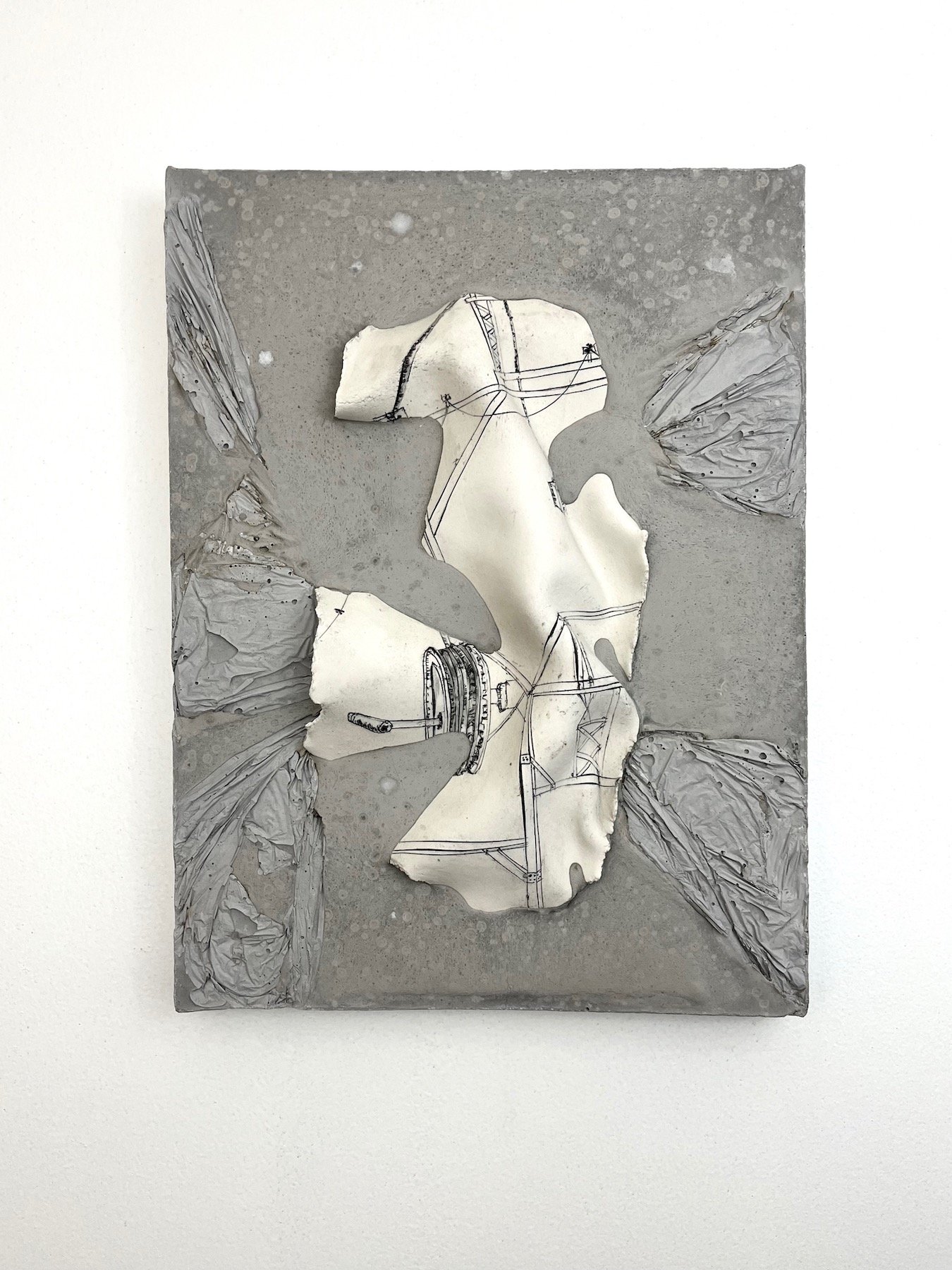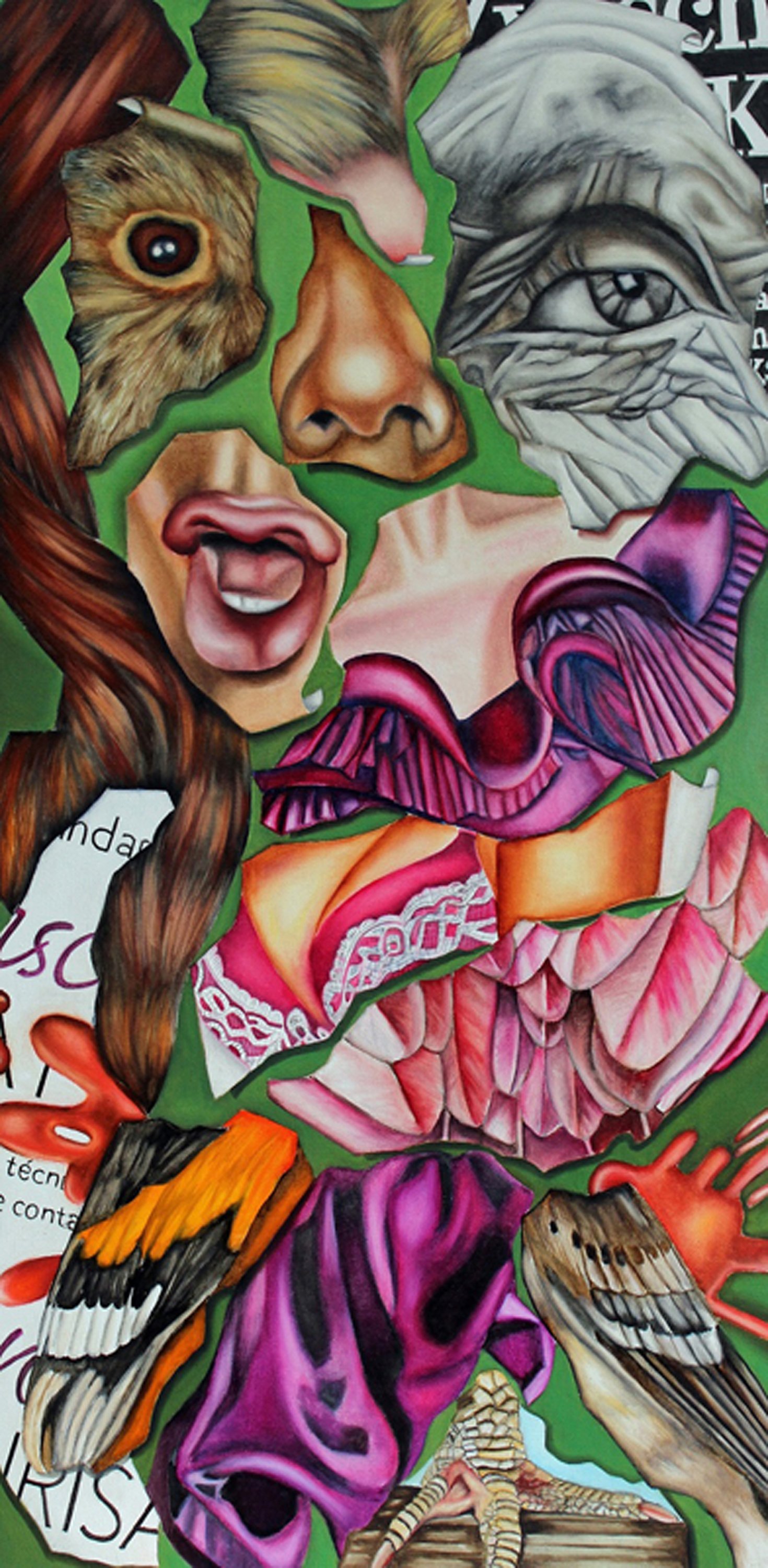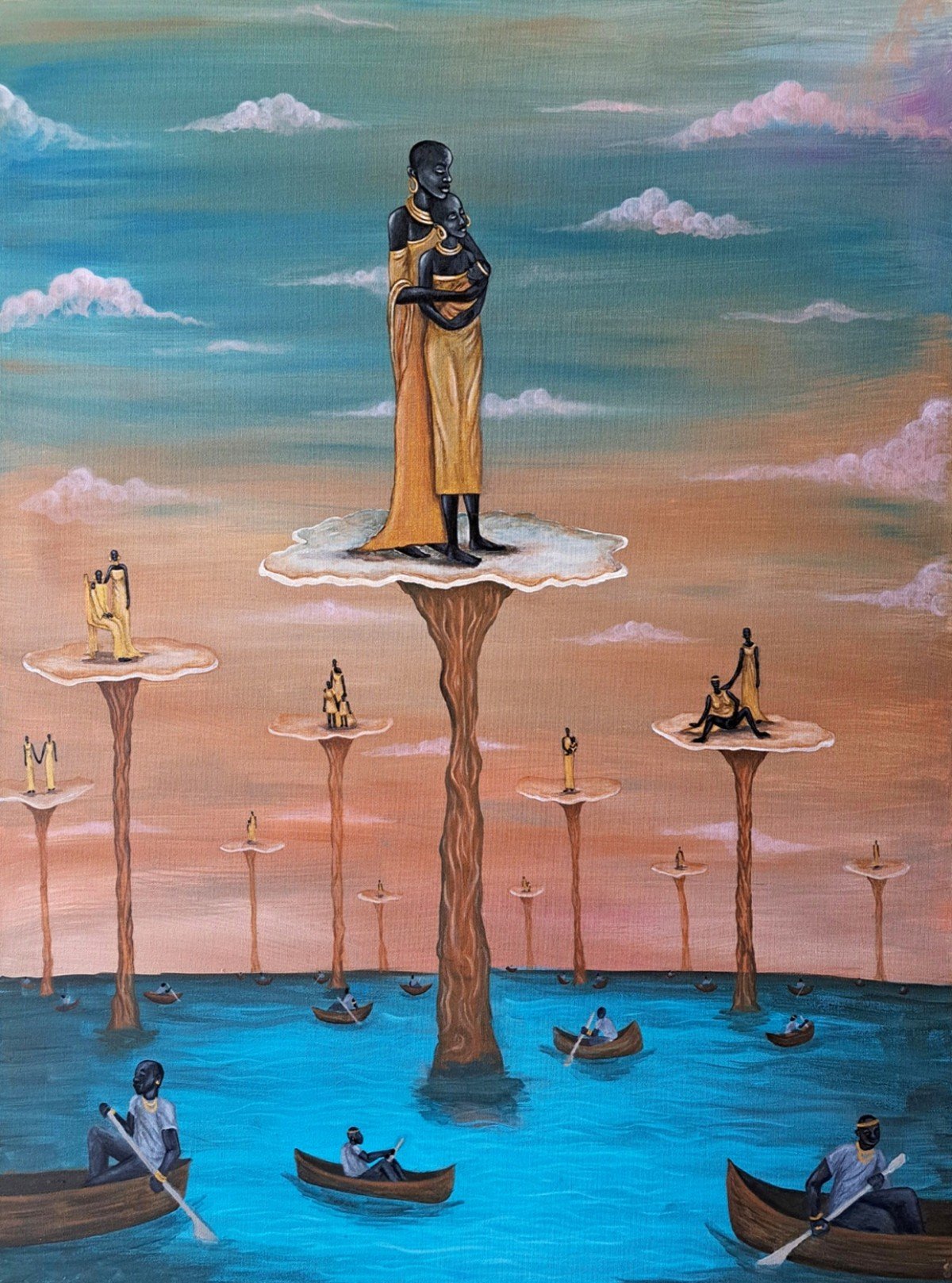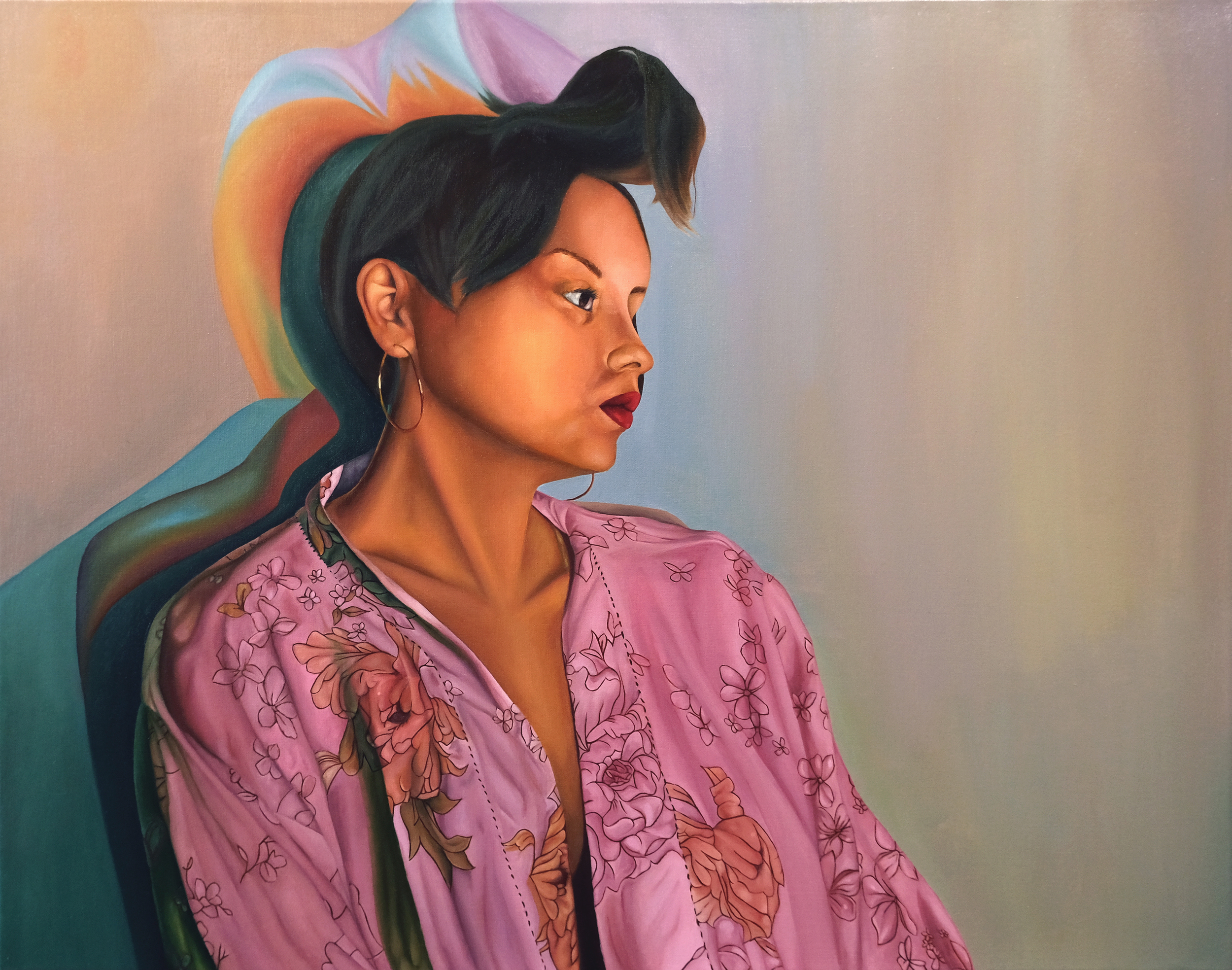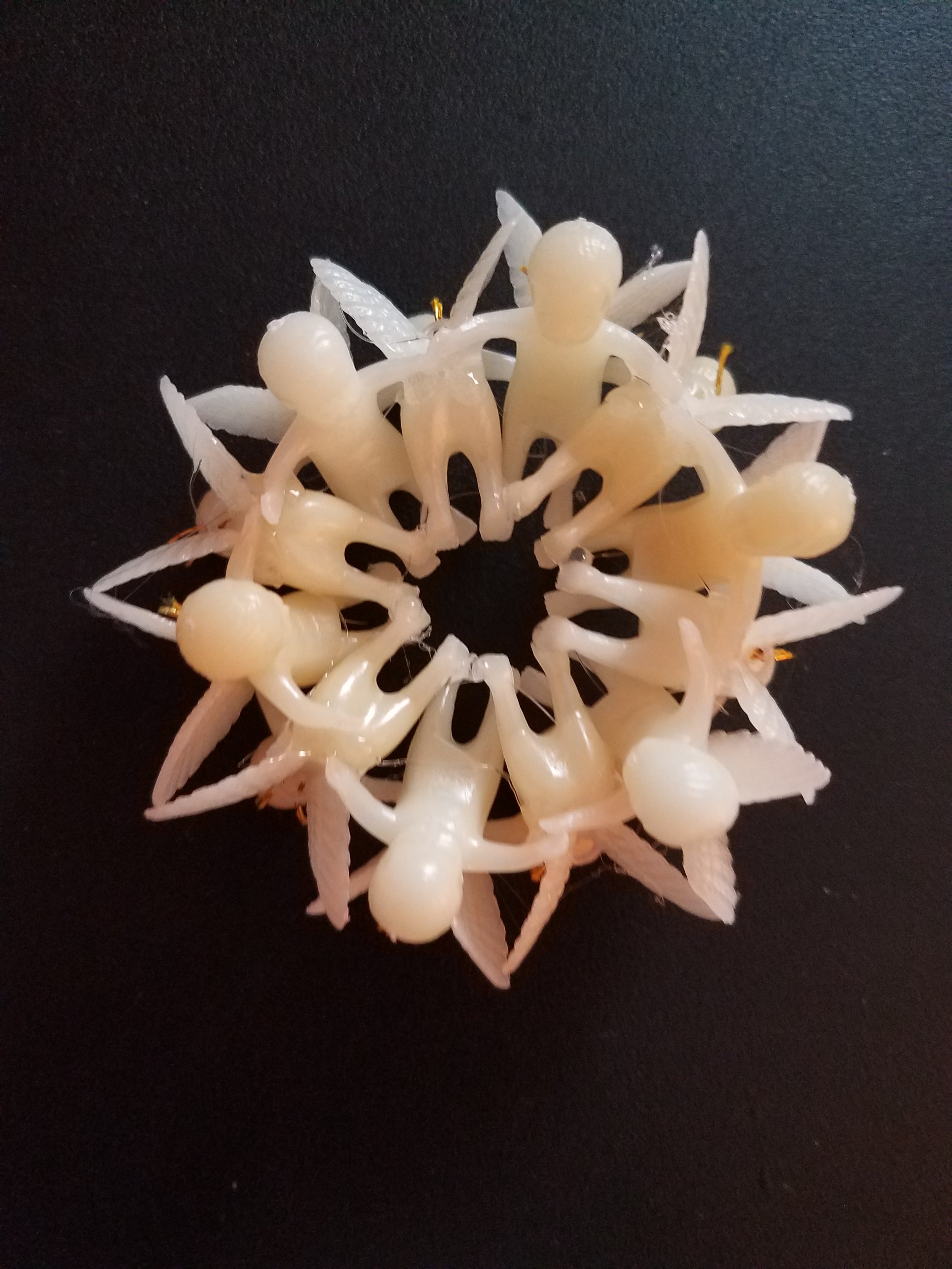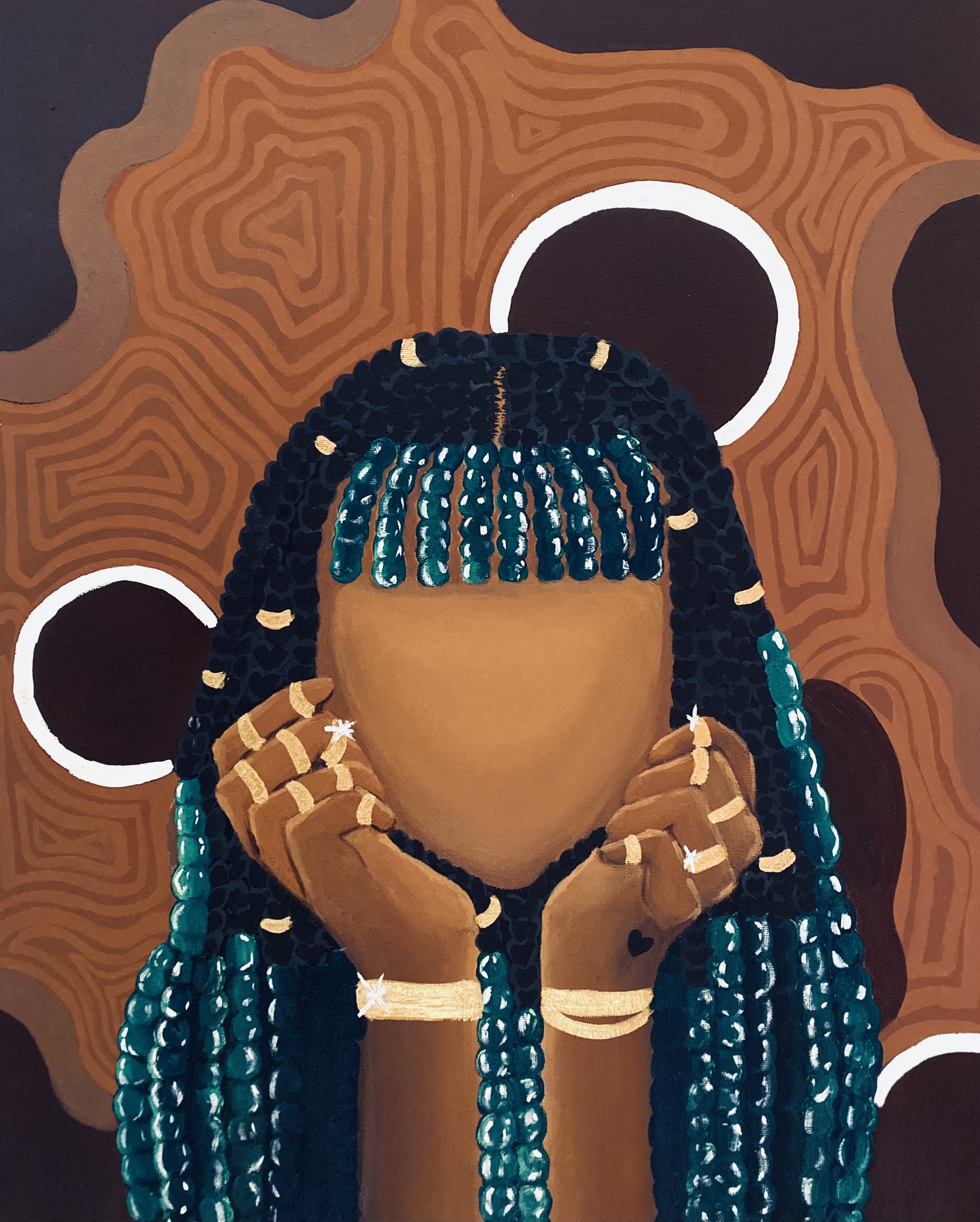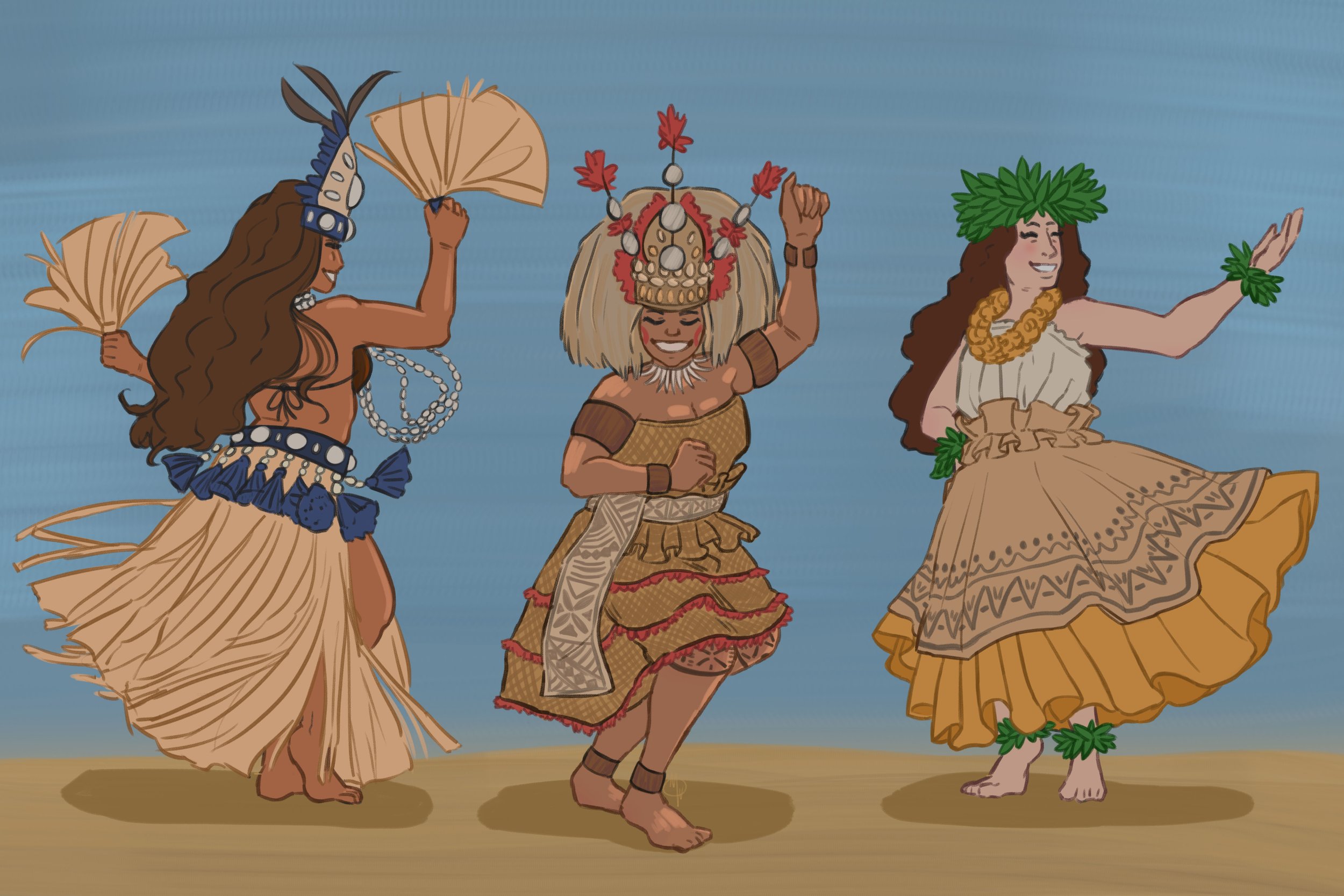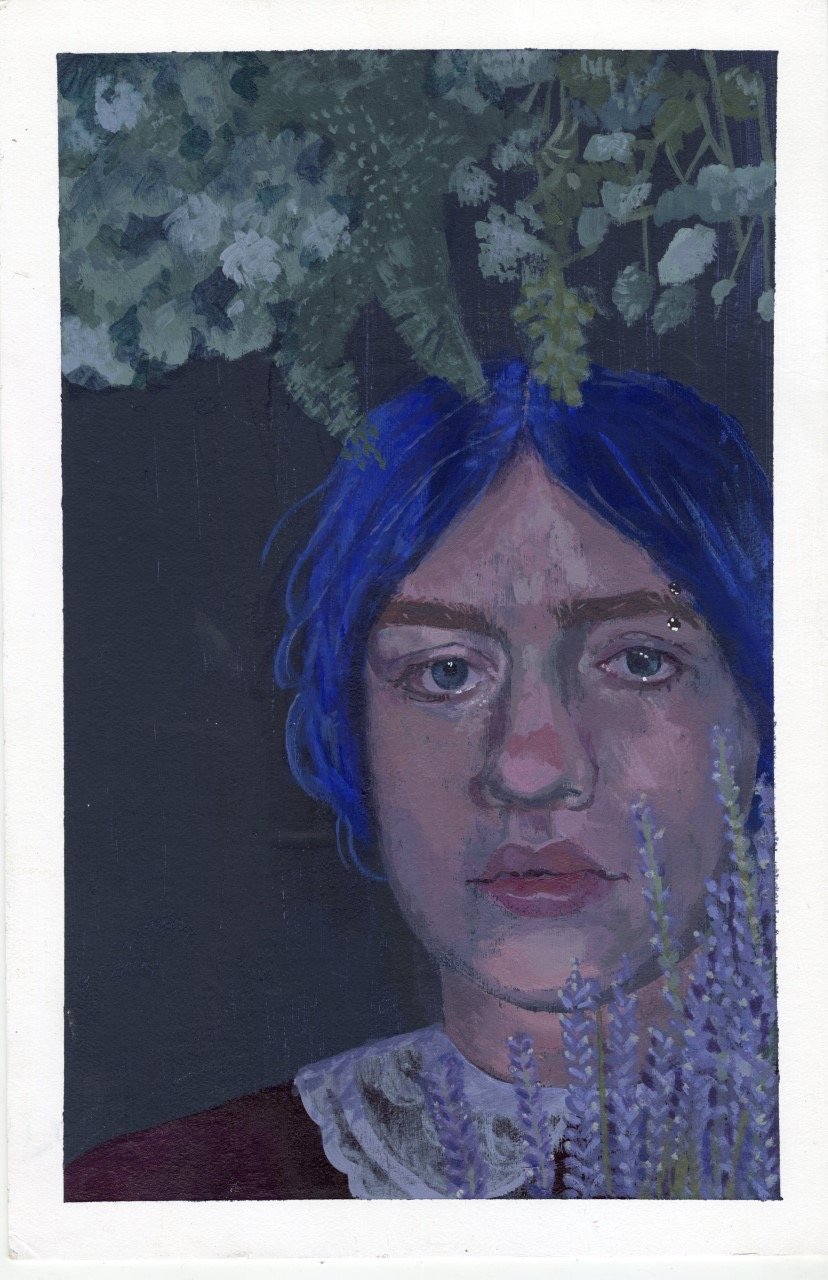In the Studio with Artists from CAC's Third Annual Women's History Month Exhibit: Her Voice, Her Vision
Today, we’re going In the Studio with artists from CAC’s Third Annual Women’s History Month Exhibit: Her Voice, Her Vision. Their artwork is on display in the Chesapeake Arts Center’s Hal Gomer Gallery and CAC Hallways,
on view from March 11 - April 23.
Featured artists include: Brit Alex, Nicole Alfon, Hannah Atallah, Ann Baun, Jovan Bethel, Sandra Blevins, Sara Caporaletti, Andrea Downs, Coriander Focus, Lillian Jacobson, Hailey Jordan, Barabara Dahlberg, Kathy Daywalt, Nina DeAngelo, Shanti Dixon Gramby, Kelly Hall, Diamond Jones, Elissa Jones, Jeniffer Lancaster, Sarah Laraine, Brianne Lesane, Charlotte Kuethe, Cindy Mehr, Karen Middleton, Diane Osburn, Linda Popp, Sara Prigodich, Gail Robertson, Beth Schwartz, Atalante Shay, Serenity Smith, Macy Toalepai, and Chenell Turner.
Why did you choose to be an artist?
I think this is an interesting question. It really made me think; simply saying something about skill is not a sufficient answer. One can be a skillful artist, or skillful at anything, and not choose that thing as their profession. I actually have enough reasons to deter me from being an artist. I was going to say I feel discouraged when creating art sometimes, but I don't think that's a strong enough word. Sometimes my performance and my thought process when creating art inspires a certain despair. I get very insecure and self destructive and I feel that it actually makes my art worse sometimes. I get anxious about fulfilling commitments. But some of my proudest and happiest moments have been from creating art. I choose to be an artist because I believe it is my calling. When I imagine doing anything else, it feels like I would not be fulfilling a duty that I have to myself and my life. This is not to say that it's a hard choice or one that comes with a lot of pressure. While it comes with some negativity, as anything worthwhile does, art is my way of making an impact in others lives and my own. It's my way of coping and healing. I realize things about myself and my environment when I create- it seems that I uncover things from my subconscious that are essential to my growth as a person. It takes a lot of physical and emotional effort, but the choice to be an artist, to me, is easy and obvious. Being able to be an artist and pursue art is a privilege that I am lucky to have. It is an active choice that I will not take for granted and I will choose again and again."
-Charlotte Keuthe
When did you start creating art? Was there an event that led you to this?
When I was in the 8th grade an artist visited my art class and gave a demo. She left business cards at the end. I was so enamored with her demo that I took one of her business cards and when I got home from school I gave it to my mother and told her I wanted to take lessons from this lady. My mother signed me up for a once a week art class with her and I continued taking lessons from her until I was 19 and then I majored in Art.
-Jennifer Lancaster
What characteristic about your personality shows through your art?
Two defining personality traits are manifested in my art. The first is boldness. My style is very graphic and does not shy away from color, political statement or sly send-ups. I was raised in New York City, came of age in the late 60s and 70s (constantly butting heads with a very conservative parent), went to a college that encouraged participatory learning, and persistently stood up to the innate sexism of medical school and training in the late 70s and 80s. My life has been a masterclass in how to stand up for oneself, and this is reflected in the boldness of my art.
Perusal of my website can be puzzling, since I don’t seem to stick to one style or technique. I am a physician who majored in English literature. I remain passionate about literature to this day, and am a serious student of art history. Over the years, I have studied geology, religion, history, music, linguistics, etc. I hike and travel as much as time will allow. I have never felt the need for one or even two interests to define me. I suppose this is why I slip in and out of so many categories in my artwork.
-Beth Schwartz
What does your work represent?
I am fascinated by the subjective way people can view the same things. I depict abstract interpretations of the world to lure the viewer into a piece to promote contemplation, inquisition and pause. My work represents the beauty, pain, pleasure, ebb and flows of the world that we all personally experience in some shape or form.
-Brit Alex
How do you prepare to start a new piece?
I usually just pick a color palette which can change during the process, and whichever tools I want to use and just go with it.
-Diane Osburn
What’s your go-to song or album that you listen to while you create?
My go-to artist would be Mereba– Get Free, Kinfolk, dodging the devil, all songs that have my heart. She has a beautiful way of storytelling through her blend of folk and r&b, exploring guitar with beats and building choruses. Her work feels like portals to ancestors, transporting me into the grounded and abundant worlds I want to breathe life into through my illustrations.
-Hailey Jordan
Does your gender impact your art? If so, how?
I am a social practice and mixed media artist. Through my work, I observe, respond to and amplify personal and collective stories with an emphasis on women’s experiences and the value of relationships and connectivity. I use found and personal heirlooms and objects, depictions of nature, text, and symbolic imagery to create work that explores identity, sense of place and belonging. Some of my work focuses specifically on questioning the ever-present and harmful systems of power and misogyny that impact my life and continues to threaten the freedoms and liberties of all women living in the United States. In “Finding Liberty: A Portrait of My Daughter,” I’m centering my daughter’s experience as a young woman growing up in a country whose highest court in the land made the horrible decision to reverse the U.S. constitutional right to abortion. Political leaders are not doing enough if our lives and liberties are consistently threatened in the places in which we are told that we should feel the most safe–our homes, our schools, and our own bodies.
-Andrea Downs
Who is your mentor and what did he or she teach you?
My mentor is Marcel Duchamp, someone who possesses the traits of thoughtfulness, humility, and playfulness in his approach to art. I've been inspired by his courage in rebelling against established norms, his use of tongue-in-cheek humor, and his ability to subdue his own ego in an effort to promote transformative thinking. Through his example, I have learned not to take myself too seriously since over-indulgence in any sort of rigid paradigm can prevent the flow of creative energy.
-Cindy Mehr
How do you find inspiration?
I am part Polynesian, my late Grandfather was from the Island of Samoa. All through my life I have learned dances and music from different Polynesian Islands as well as costume making. When I lived in Hawaii, I was able to enjoy many festivals that celebrated the Polynesian people. This piece is inspired by all of these experiences and these three women represent the Polynesian Islands of Tahiti, Samoa, and Hawaii.
-Macy Toalepai
I find inspiration for my art from a variety of sources. Many of my ideas come from aspects of my own life that I want to process in creative ways. I take photos of things that catch my eye and spark ideas. I also write notes in sketchbooks of ideas that I want to work on. I work with many artists in my day job and am constantly inspired through conversations with them. I feel that artists create best when they are surrounded by a community that is supportive and encouraging.
-Sandra Caporaletti
How has your art/style evolved over time?
My art follows in step with my life experience. From Stranger Portraits at festivals, to a long series of self portraits during the 2020 Covid lock down, my work is constantly shifting andevolving along with the world and my own internal experience. Recently I have begun to put into practice goals I have had around making photography more than just two dimensional wall art. I have begun layering embroidery, adding mirrors, and even building a full six foot church window that has rain drops that streak down it to add new elements to my work. I love art as an experience. Art should not just be viewed, it should be immersive and impactful.
-Coriander Focus
How have your life experiences influenced your aesthetic style?
My art form is about making the most of what you have, that’s why I design and create within the confines of a box, often using materials found around the house.
As a child growing up, I felt hopeless and helpless in my body and my circumstances. I was an unwanted child, born into an abusive relationship and dragged across the country by my mother, never being able to establish lasting friendships or develop any sense of security. By eight years old, I was then a parentified child, experienced sexual abuse, and separated from my grandmother who was the only person who offered me safety. My rage and anger grew but so did my desire to create.
In my anguish, I would create based on what was around. When I earned extra money from odd jobs, I’d find a way to buy supplies from the local craft store. But my ingenuity was finding ways to reuse items that were hanging around and working within the confines and boundaries of my life and circumstances.
My BoxArt encapsulates this struggle. The idea is that we can design a beautiful life or find beauty within the confines of the boxes we were born into. Your boxes could be gender, religion, cultural norms, mental illness, economic status, socio-economic status, and more. No matter what box you were born into, you can have a beautiful life full of color and passion. You are not boxed in.
-Jamila Mathis
How does art impact society?
Art is the release that society needs in order to have a more in-depth and expressive perspective about human life. Art is tangible enough to help people interpret the complex feelings that come with being a human being and without the different types of art forms to help us express those feelings, we as a society would be more ignorant what those feelings are and how to handle them.
-Chenell Turner
How would you describe your artwork?
I describe my artwork as narrative found object assemblage sculpture. I use artifacts and symbolic objects to convey stories about relationships with family, place, love, faith, nature, self, time, and other themes. During the process, I go beyond my personal stories and the narrative becomes universal as I feel our stories are all connected. Being a woman and of a certain age, I attempt to share my unique perspective in my work. I am resilient and have first-hand knowledge to share.
The objects that I use are often found at flea markets and yard sales. Many people give me objects as they are purging….chotskis that they don’t want to end up in a landfill. These objects get a new chapter as they are arranged in compositions in many layers. Part of the challenge is to get these various objects and materials to work together visually using quality craftsmanship in the process.
Some objects/symbols are obvious; others may be interpreted by viewers differently as they bring their own experiences and engage the work. I enjoy the idea that something from my story may cause others to reflect on their own narrative. Reflection on personal narratives in order to better understand self and others is a very powerful experience that continues to draw me to the studio and my work. I have come to trust my collecting and allow objects to come to me during the art-making process. Many of the titles of my work come from music, books, and poetry that then guide my intention as I assemble my found objects.
-Linda Popp
“I was previously focused on the classical Renaissance-style of figure oil painting, wanting to construct big epics with perfect anatomical accuracy and vibrant naturalistic color palettes. However, I often felt restricted within the limits of this style, being detrimentally critical with myself and how I painted. Conversely, my sketchbook pages would be full of bright colors with surreal and abstract figure-based imagery. Using colored markers and pens for my sketchbook work was easier for me to achieve the art style I wanted, but this sketchbook style and my painting style remained separated. At the end of my senior year, I discovered acrylic paints worked better for the colorfully abstract style I craved and I grew increasingly comfortable using them. I’ve also always been big on textured paintings, so once I entered college, I experimented with applying mixed media materials using gesso and painting over them. This leads to the current day where I continue experimenting with saturated fluorescent colors, texture, and mixed media.”
-Kelly Hall
How do you know when a work is finished?
It’s a two step process for me. First, the fabrics I’m using have to blend and harmonize. When you paint you can tweak colors to do that. But with fiber, because you are working with something that has already been printed and has set color, it is critical that your fabrics harmonize to bring the image to life. So when I can step back and see the image I’m trying to capture, without ‘noticing’ the textiles used, then I know that the image itself is finished. Step two is the act of stitching. The choice of stiches can enhance or detract from an artwork, so once I’ve decided on a route for the quilting itself, I will do testers until I find a stitch that I think will enhance the work. Once the stitching is complete, I will again step back from the piece and look at what the choice of stitching is doing. I continue this dance until the overall image dominates both the stitching and fabric harmony. At that point, I then know the work is completed and will trim and bind the work.
-Karen Middleton
If you could be anything besides an artist, what would you be, and why?
Growing up, I was sure I would pursue art academically and professionally. Well, life is funny and it turns out I became a scientist instead! I did my doctoral work studying the contribution of water and other molecules in planet formation around young, sun-like stars, and I now work with Earth Science data and information systems at NASA Goddard Space Flight Center in Greenbelt, Maryland. I paint, crochet, quilt, and create art any time I find my hands and mind free. At this time in my life I am dedicated to exhibit and share my artwork with others to spread joy and beauty, connect with others, and share and discover inspiration from the Maryland Arts communities.
-Sandra Blevins
What is the best thing about being an artist?
The best thing about being an artist is having the ability to create an image inspired by the narrative I am thinking about. Personally, I am not really able visualize pictures in my mind so when I make art I am seeing what my idea looks like for the first time. I am a translator. I translate words into pictures, the mental into the physical. Similarly to how a mother is a portal between the spirit world and the physical world, artists can be portals too.
-Serenity Smith
Her Voice, Her Vision
Hal Gomer Gallery | March 11 - April 23
Gallery Hours:
Monday-Thursday 10am - 6pm | Saturday 10am-1pm






